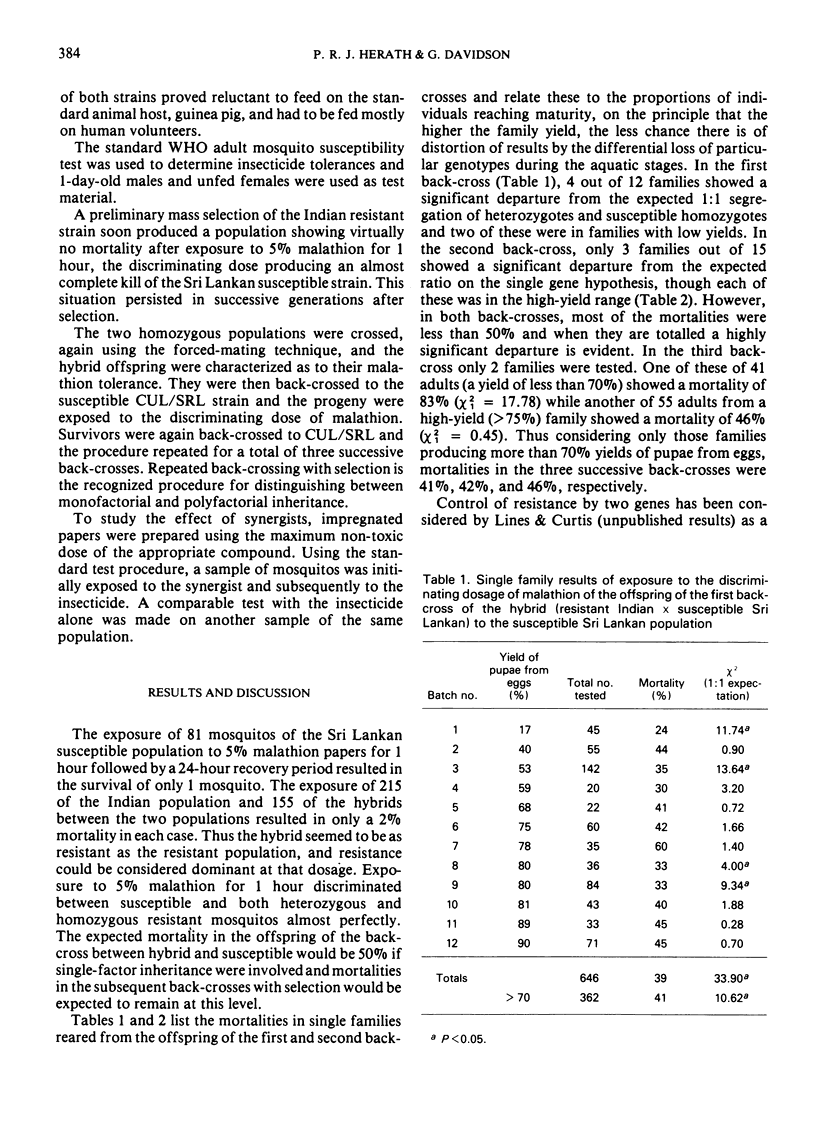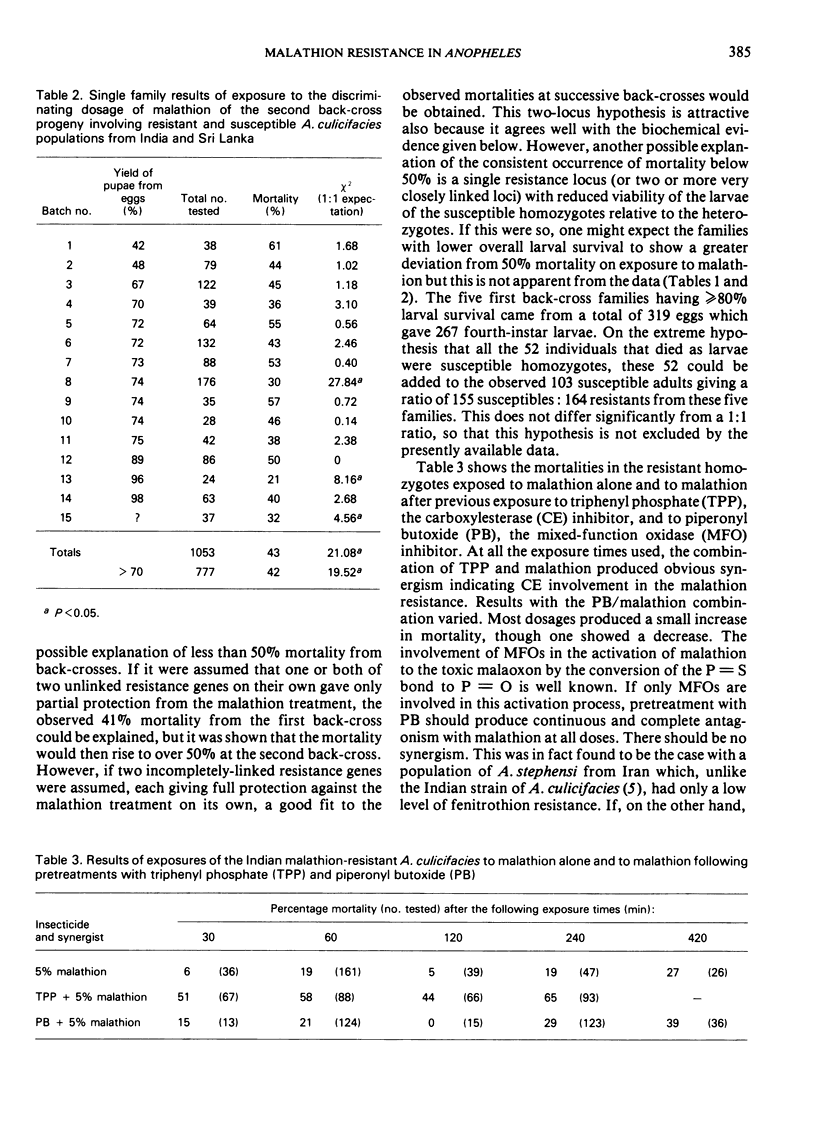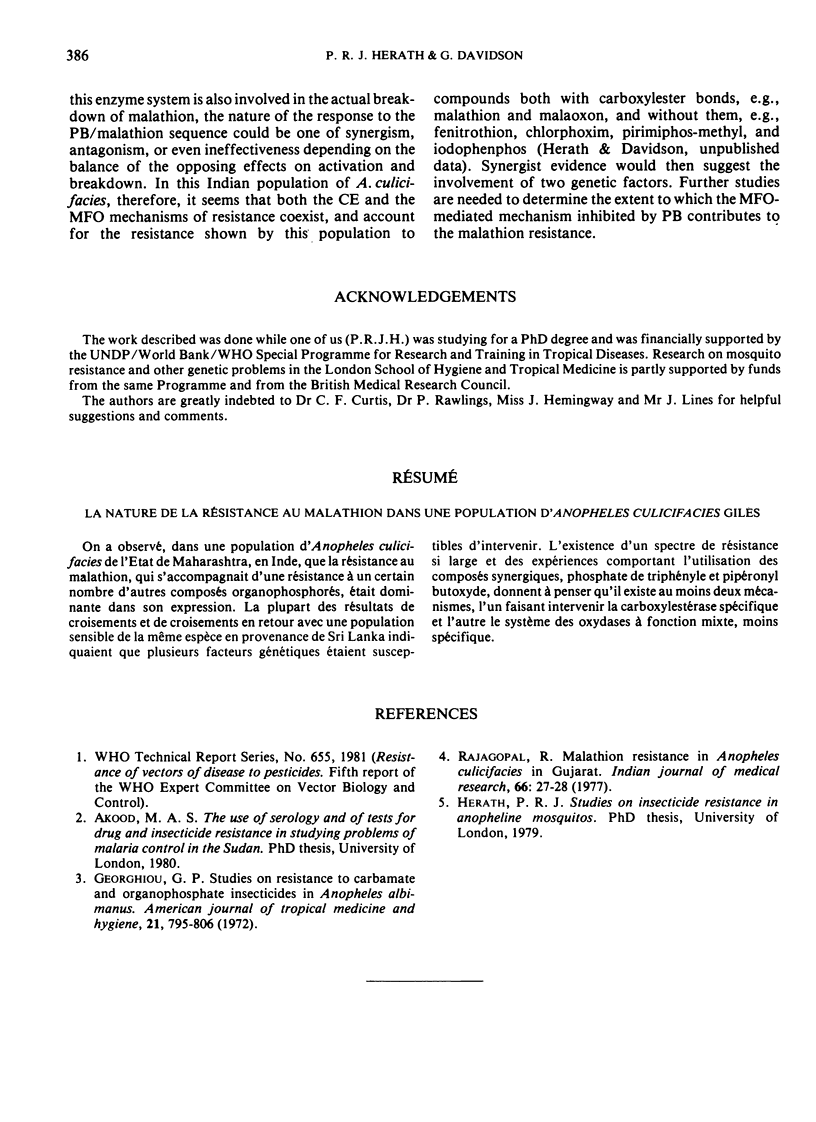Abstract
Malathion resistance in a population of Anopheles culicifacies from Maharashtra State in India, which also showed resistance to a number of other organophosphorus compounds, was found to be dominant in its expression. Most of the crossing and back-crossing results involving a susceptible population of the same species from Sri Lanka indicated the possible involvement of more than one genetic factor. The existence of such a broad spectrum of resistance, and experiments involving the use of the synergists triphenyl phosphate and piperonyl butoxide both suggest the presence of at least two mechanisms, one involving the specific carboxylesterase and the other the less specific mixed-function oxidase system.
Full text
PDF



Selected References
These references are in PubMed. This may not be the complete list of references from this article.
- Georghiou G. P. Studies on resistance to carbamate and organophosphorus insecticides in Anopheles albimanus. Am J Trop Med Hyg. 1972 Sep;21(5):797–806. doi: 10.4269/ajtmh.1972.21.797. [DOI] [PubMed] [Google Scholar]
- Rajagopal R. Malathion resistance in Anopheles culicifacies in Gujarat. Indian J Med Res. 1977 Jul;66(1):27–28. [PubMed] [Google Scholar]


